- europages
- >
- COMPANIES - SUPPLIERS - SERVICE PROVIDERS
- >
- level sensors
Results for
Level sensors - Import export
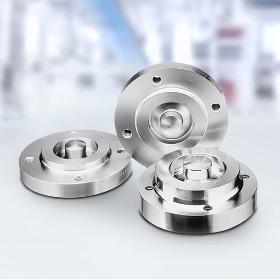
MINEBEA INTEC GMBH
Germany
The PR 6251 fill-level sensor is specially designed for basic weighing of silos and horizontal tanks. It meets all requirements for years of trouble-free operation without adjustment. For use in EX zones 1, 2, 20, 21, 22 and DIV 1. Ultra-flat load cell for low precision tank weighing as alternative to level sensors Load cell capacity range from 500 kg to 16 t Accuracy class: L (0.5 %) Corresponding mounting kit: PR 6051
Request for a quote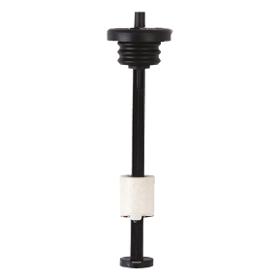
CIC - KLAUS CZERWONKA
Germany
For oil, petrol, diesel fuels
Request for a quote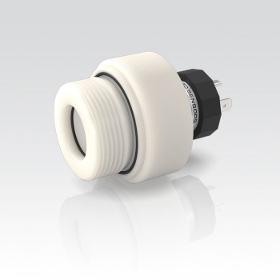
BDSENSORS GMBH
Germany
The screw-in transmitter LMK 351 has been designed for measuring small system pressure and level measurement in container. The LMK 351 is based on an own-developed capacitive ceramic sensor element. Usage in viscous and pasty media is possible because of the flush mounted sensor. For the usage in aggressive media a pressure port in PVDF and the diaphragm in AI2O3 99.9 % is available. An intrinsically safe version complete the range of possibilities. Features — nominal pressure: 0 ... 40 mbar up to 0 ... 20 bar — accuracy: 0.35 % (opt. 0.25 %) FSO — pressure port G 1 1/2" for pasty and polluted media Optional Features — IS-version Ex ia = intrinsically for gases and dusts — pressure port PVDF for aggressive media — diaphragm pure ceramic (99,9 % Al2O3) — customer specific versions
Request for a quote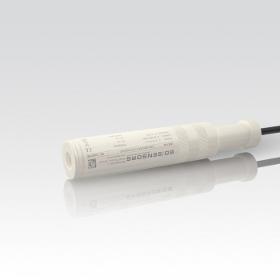
BDSENSORS GMBH
Germany
The detachable plastic submersible probe LMK 808 was developed for level measurement in water and wastewater. The basis of the probe is an extremely robust, almost maintenance-free capacitive ceramic sensor. For level measurement in river courses, on weir systems or in locks, great emphasis was placed on overvoltage / lightning protection. In addition, the cable can be protected against bites if necessary. The sensor head can be separated from the cable part and can therefore be replaced if necessary without time-consuming assembly work. Features: — nominal pressure: 0 ... 1 mH2O bis 0 ... 100 mH2O — accuracy: 0.35 % (opt. 0.25 %) FSO — diameter 35 mm — diaphragm ceramics Al2O3 (99.9 %) — excellent long term stability — integrated lightning protection 8 kA gas discharge tube (8/20µsec); 4 kV surge l-l/l-e according to EN61000-4-5 Optional Features: — mounting accessories — different kinds of elastomer
Request for a quote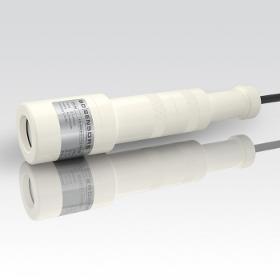
BDSENSORS GMBH
Germany
The separable plastic immersion probe LMK 858 was designed for level measurement in aggressive media, desalination plants and for use in more viscous media such as sludge. Since the area of application is often outside a building, great emphasis was placed on high surge / lightning protection. The immersion probe is based on an extremely robust and precise pressure sensor, the membrane of which consists of a high-purity ceramic. Another special feature of the LMK 858 is the separability of the probe head and cable part. Features: — nominal pressure: 0 ... 40 cmH2O up to 0 ... 100 mH2O — accuracy: 0.35 % (opt. 0.25 %) FSO — diameter 45 mm — chemical resistance — housing PP-HT — integrated lightning protection and increased overvoltage protection; 8 kA gas discharge tube (8/20 μsec); 4 kV surge l-l/l-e according to EN61000-4-5 Optional Features: — cable protection — diaphragm pure ceramic (99.9 % AI2O3)
Request for a quote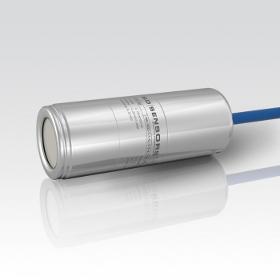
BDSENSORS GMBH
Germany
The LMK 458 has been developed for measuring level in service and storage tanks and is as a consequence certificated for shipbuilding and offshore applications. A permissible operating temperature of up to 125 °C and the possibility to use the device in intrinsic safe areas enable to measure the pressure of various fluids under extreme conditions. The basis for the LMK 458 is a capacitive ceramic sensor element designed by BD\SENSORS, which offers a high overload resistance and medium compatibility. Features: — nominal pressure: 0 ... 40 cmH2O up to 0 ... 200 mH2O — accuracy: 0.35 % (opt. 0.1 %) FSO — diameter 39.5 mm — high overpressure capability — high long term stability — shipping approvals: ABS, BV, CCS, DNV, GL, LR Optional Features: — IS-version — diaphragm pure ceramic (99.9% AI2O3) — different housing materials (stainless steel, CuNiFe) — screw-in and flange version — accessoires
Request for a quote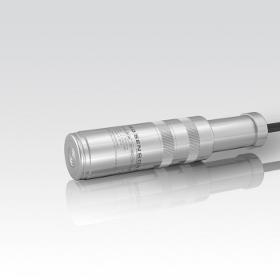
BDSENSORS GMBH
Germany
The separable stainless steel probe LMP 308 is designed for the continually level measurement of water and thin fluids. In order to facilitate stock-keeping and mainten-ance the transmitter head is plugged to the cable assembly with a connector and can be changed easily. Features: — nominal pressure: 0 ... 1 mH2O up to 0 ... 250 mH2O — accuracy: 0.35 % (opt. 0.25% / 0.1 %) FSO — diameter 35 mm — cable and sensor section separable — excellent long term stability — high accuracy Optional Features: — IS-version Ex ia = intrinsically safe for gas and dust — SIL 2 (Safety integrity level) — customer specific versions — mounting accessoires as cable gland and terminal clamp of stainless steel — different kinds of cables — different kinds of seal materials
Request for a quote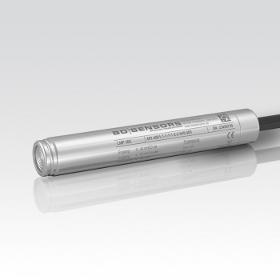
BDSENSORS GMBH
Germany
The slimline probe LMP 305 with silicon stainless steel sensor is designed for continous level measurement in confined space conditions. Permissible media are clean or waste water and thin fluids. A piezoresistiv stainless steel sensor with low thermal error, an excellent linearity and a long term stability, is basis of LMP 305. Features: — nominal pressure: 0 ... 1 mH2O up to 0 ... 250 mH2O — accuracy: 0,35 % (opt. 0,25 %) FSO — diameter 19 mm for cramped areas e.g. 1" observation well — small thermal effect — excellent linearity — excellent long term stability Optional Features: — different kinds of cable — customer specific versions e.g. special pressure ranges
Request for a quote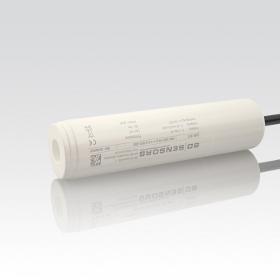
BDSENSORS GMBH
Germany
The plastic submersible probe LMK 807 is designed for continous level measurement for waste water or and different aggressive media. Basic element of the plastic submersible probe is the flush mounted ceramic sensor, which makes cleaning easier when solid parts of the medium deposit on it. Different cable and elastomer materials are available in order to achieve maximum media compatibility. Features: — nominal pressure: 0 ... 4 mH2O up to 0 ... 100 mH2O# — accuracy: 0.5 % FSO — diameter 35 mm — excellent long term stability — easy handling Optional Features: — SIL 2 (safety integrity level) according to IEC 61508 / IEC 61511 — different kinds of cables and elastomeres — customer specific version e.g. special pressure ranges
Request for a quote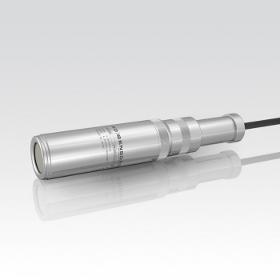
BDSENSORS GMBH
Germany
The separable stainless steel probe LMK 358H has been designed for level measurement in waste water, waste and higher viscosity media. Basic element is a capacitive ceramic sensor. In order to facilitate stock-keeping and maintenance the transmitter head is plugged to the cable assembly with a connector and can be changed easily. Features: — nominal pressure range 0 ... 60 cmH2O up to 0 ... 100 mH2O — accuracy: 0.1 % — diameter 39.5 mm — cable and sensor section separable — HART®-communication (setting of offset. span and damping) — permissible temperatures up to 85 °C — high long term stability Optional Features: — IS-version Ex ia = intrinsically safe for gas and dust — cable protection via corrugated pipe — diaphragm (AI2O3 99.9 %) — accessories e.g. mounting flange with cable gland and terminal clamp
Request for a quote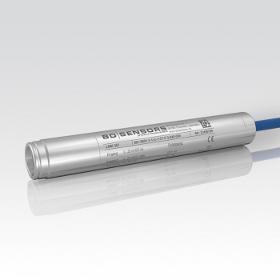
BDSENSORS GMBH
Germany
The stainless steel probe LMK 387 was developed for level and gauge measurement in wastewater, sludge or water courses. The mechanical robustness of the front-flush ceramic diaphragm faciliates an easy disassembly and cleaning of the probe in case of service. Compared to the level probe LMK 382 the outside-diameter is only 22 mm, which allows an easy installation and backfitting in 1" tubes or in cramped fitting conditions. An IS-version is also available. Features: — nominal pressure: from 0 ... 4 mH2O up to 0 ... 100 mH2O — accuracy: 0.35 % (opt. 0.25 %) FSO — diameter 22 mm — diaphragm ceramics 99.9% Al2O3 (on request) — highly appropriated for wastewater, sludge and viscous media Optional Features: — IS-version — housing material titanium — drinking water certificate according to DVGW and KTW — temperature element Pt 100 — mounting with stainless steel tube — different kinds of cables and elastomers
Request for a quote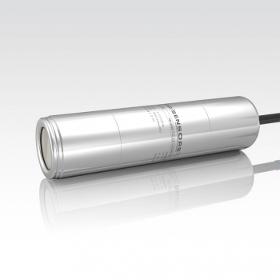
BDSENSORS GMBH
Germany
The stainless steel probe DCL 551 with RS485 in-terface uses the communication protocol Modbus RTU which has found the way in industrial communication as an open protocol. The Modbus protocol is based on a master slave architecture with which up to 247 slaves can be questioned by a master – the data are transferred in binary form. DCL 551 has been designed for hydrostatic level measurement in sewage as well as for viscous and pasty media. Basic element is a robust and high overpressure capable capacitive ceramic sensor. Features — Nominal pressure: from 0 ... 40 cmH2O up to 0 ... 200 mH2O — accuracy: 0.35 % (opt. 0.25 %) FSO — output signal: RS485 with Modbus RTU protocol — diameter 39.5 mm — excellent long term stability — especially for sewage, viscous and pasty media Optional features: — diaphragm ceramics Al2O3 99,9%
Request for a quote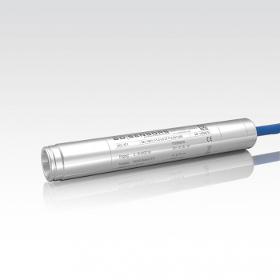
BDSENSORS GMBH
Germany
The DCL 571 with RS485 interface uses the communication protocol Modbus RTU which has found the way in industrial communication as an open protocol. The Modbus protocol is based on a master slave architecture with which up to 247 slaves can be questioned by a master – the data will transfer in binary form. The probe was developed for level measurement in waste water, sludge or water courses. The mechanical robustness of the flush ceramic diaphragm facilitates an easy disassembly and cleaning of the probe in case of service. The outside-diameter is only 22 mm for easy installation and back fitting in 1″ tubes or in cramped fitting conditions Features — Nominal pressure from 0 ... 1 mH2O up to 0 ... 100 mH2O — accuracy: 0.35% (opt. 0.35 %) FSO — output signal: RS485 with Modbus RTU protocol — diameter 22 mm — highly appropriated for sewage water Optional features — drinking water certificate according to DVGW and KTW
Request for a quote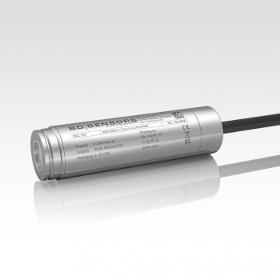
BDSENSORS GMBH
Germany
The stainless steel probe DCL 531 with RS485 interface uses the communication protocol Modbus RTU which has found the way in industrial communication as an open protocol. The Modbus protocol is based on a master Slave architecture with which up to 247 Slaves can be questioned by a master – the data are transferred in binary form. Basic element is a high quality stainless steel sensor with high requirements for exact measurement with excellent long term stability. Features — nominal pressure: 0 ... 1 mH2O up to 0 ... 250 mH2O — accuracy: 0.25 % FSO — output signal: RS485 with Modbus RTU protocol — diameter diameter 26.5 mm — small thermal effect small thermal effect — high accuracy excellent accuracy — reset function Optional Features — drinking water certificate according to DVGW and KTW — different kinds of cables — different kinds of seal materials
Request for a quote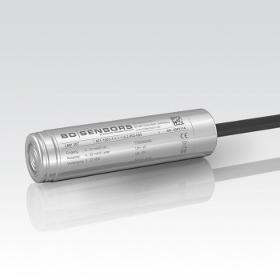
BDSENSORS GMBH
Germany
The stainless steel probe LMP 307 is designed for continuous level measurement in water and clean or waste fluids. Basic element is a high quality stainless steel sensor with high requirements for exact measurement with excellent long term stability. Features: — nominal pressure: 0 ... 1 mH2O up to 0 ... 250 mH2O — accuracy: 0,35 % (opt. 0,25% / 0,1 %) FSO — diameter 26,5 mm — small thermal effect — excellent long term stability — high accuracy Optional Features: — IS-version Ex ia = intrinsically safe for gas and dust — SIL 2 (safety integrity level) — drinking water certificate acc. to DVGW and KTW — different kinds of cables and elastomers — petrol version, welded pressure sensor and housing — mounting with stainless steel pipe
Request for a quote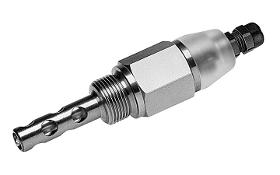
BEDIA MOTORENTECHNIK GMBH & CO. KG
Germany
The capacitive level sensor BEDIA NR 150 is suitable for liquids with low relative dielectric constant εr 1,8 … 6 (ref. εr 2,1). It has a MIN/MAX selector switch and the functions for MIN or MAX monitoring as well as other properties (output signal LSS or HSS, response delay etc.) are factory pre-set. The switch point is adjustable by means of a teach-in momentary switch.
Request for a quote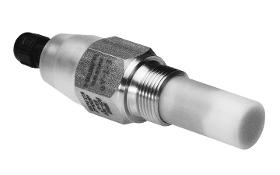
BEDIA MOTORENTECHNIK GMBH & CO. KG
Germany
The capacitive level sensor NR 160 is designed to monitor liquids and powders with high relative dielectric constant εr 35 … 85. The functions for MIN or MAX monitoring as well as other properties (output signal LSS or HSS, response delay etc.) are factory pre-set. The switch point is adjustable by means of a teach-in momentary switch.
Request for a quoteDo you sell or make similar products?
Sign up to europages and have your products listed
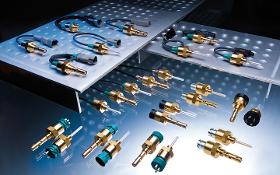
BEDIA MOTORENTECHNIK GMBH & CO. KG
Germany
BEDIA level monitoring sensors are used to monitor the filling levels of liquids. The sensors react when a filling level is exceeded or falls below a limit. Aqueous mediums like coolants, AdBlue®, fresh water, waste water, bilge water and oil-based liquids like motor oils, hydraulic oils, fuels and brake fluids can be monitored. Since they contain no mechanical moving parts, their function will not be influenced by dirt particles or other influences. No electrical current is sent through the medium via an electrode with BEDIA sensors, an electrolysis of the medium is not possible. Operating Principle The function of the sensor is based on the capacitive principle. It detects the change in capacitance that arises when an electrode surrounded by air is immersed into a liquid medium. This change in capacitance at the electrode of the sensor excites an oscillator, causing it to oscillate. Then this signal is processed by a microprocessor-based evaluation circuit.
Request for a quote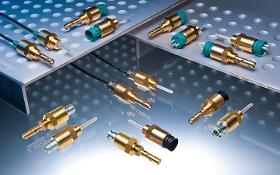
BEDIA MOTORENTECHNIK GMBH & CO. KG
Germany
BEDIA level monitoring sensors are used to monitor the filling levels of liquids. The sensors detect when a filling level is exceeded or falls below a limit. Water-based liquids like coolants, AdBlue®, fresh water, waste water and oil-based liquids like motor oils, hydraulic oils, fuels and brake fluids can be monitored. Operating Principle The function of the sensor is based on the capacitive principle. It detects the change in capacitance that occurs when an electrode surrounded by air is immersed into a liquid medium. This change in capacitance at the electrode of the sensor excites an oscillator. This signal is processed by a microcontroller-based evaluation circuit which activates or deactivates an output stage. Types of Media The level monitoring sensors are designed for two different media types: For electrically conductive liquid media with relative permittivity within a range of εr 35 … 85 (water, coolant, water/glycol mixture) For electrically non-conductive liquid media
Request for a quote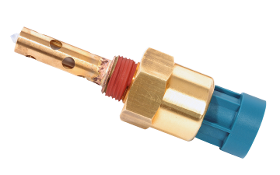
BEDIA MOTORENTECHNIK GMBH & CO. KG
Germany
Areas of Application and Advantages BEDIA CLS 10 stands for special versions of our well-proven CLS 40 series for heavy duty applications. Currently, the BEDIA CLS 10 series includes a variety of sensors, which are compatible replacement parts for level switches from Cooper Standard and Robert Shaw which are obsolete nowadays – and this in well proven BEDIA quality. This also includes sensors with 2 complementary CMOS outputs. It should be emphasized that the water sensors with two complementary outputs can be operated with a supply voltage of 4.75 V DC – 32 V DC. Operating Principle The function of the sensor is based on the capacitive principle. It detects the change in capacitance that arises when an electrode surrounded by air is immersed into a liquid medium. This change in capacitance at the electrode of the sensor excites an oscillator, causing it to oscillate (at a frequency of approx. 600 kHz). Then this signal is processed by a microprocessor-based evaluation circuit.
Request for a quote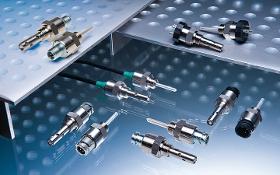
BEDIA MOTORENTECHNIK GMBH & CO. KG
Germany
BEDIA level monitoring sensors are used to monitor the filling levels of liquids. The sensors detect when a filling level is exceeded or falls below a limit. Water-based liquids like coolants, AdBlue®, fresh water, waste water, bilge water and oil-based liquids like motor oils, hydraulic oils, fuels and brake fluids can be monitored. Since they contain no mechanical moving parts, their function will not be influenced by dirt particles or other influences. No electrical current is sent through the medium via an electrode with BEDIA sensors, an electrolysis of the medium is not possible. Operating Principle The function of the sensor is based on the capacitive principle. It detects the change in capacitance that occurs when an electrode surrounded by air is immersed into a liquid medium. This change in capacitance at the electrode of the sensor excites an oscillator. This signal is processed by a microcontroller-based evaluation circuit which activates or deactivates an output stage.
Request for a quote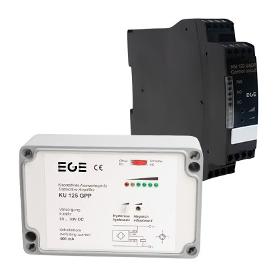
EGE-ELEKTRONIK SPEZIAL-SENSOREN GMBH
Germany
EGE amplifiers process the signals of the EGE filling level sensors for extreme temperatures at a safe distance and are used to set up the sensor via intuitive operation using potentiometer and LED strip. Amplifiers for EGE high temperature limit switches feature an auto-calibration of the switching point at the press of a button. EGE amplifiers provide switching signals or analogue signals, dependent on the device.
Request for a quote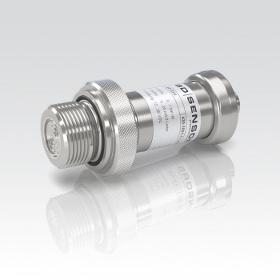
BDSENSORS GMBH
Germany
The precision screw-in transmitter LMP 331i demonstrate the further development of our industrial pressure transmitters. The signal processing of sensor signal is done by digital electronics with 16-bit analog digital converter. Consequently it is possible to conduct an active compensation and the transmitters with excellent maesurements and exeptionally attractive price to offer on the market. Features — nominal pressure: 0 ... 400 mbar up to 0 ... 40 bar — accuracy: 0.1 % FSO — thermal error in compensated range -20 … 80 °C: 0.2 % FSO TC 0.02 % FSO / 10 K — turn-down 1:10 — communication interface for adjusting of offset, span and damping Optional Features — IS-version Ex ia = intrinsically safe for gases and dusts — adjustment of nominal pressure gauges (factory-provided)
Request for a quote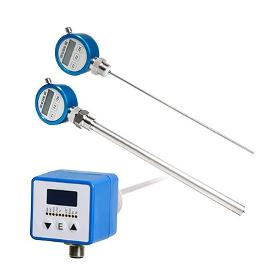
EGE-ELEKTRONIK SPEZIAL-SENSOREN GMBH
Germany
EGE microwave level sensors monitor the filling level of fluids, powders and granulate with a low DK value and are particularly resistant to adhesion. The MFC sensors are also suited for separation layer detection. The sensitivity is adjustable. The sensors are based on a special variant of microwave frequency shift technology. EGE supplies the sensors in varying lengths up to 1000 mm. The stainless steel and PTFE sensor tip is suited for use in aggressive media.
Request for a quote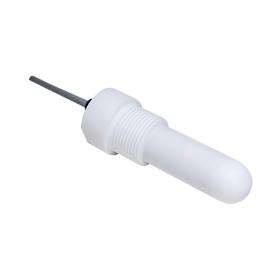
EGE-ELEKTRONIK SPEZIAL-SENSOREN GMBH
Germany
EGE capacitive level sensors for adhesive media offer the reliable monitoring of the filling level of granulate, powders, solids, such as feathers, fluids and aggressive as well as adhesive media. The medium to be detected functions as dielectric. The medium in touch with the sensor generates a capacity change. This is converted into a switching signal or an analogue 4...20 mA output signal. Level sensors of series KGFR are ideal for media with low DK value. The PTFE sleeve makes the sensor resistant to aggressive media and together with the round design ensures the fast slippage of the medium.
Request for a quote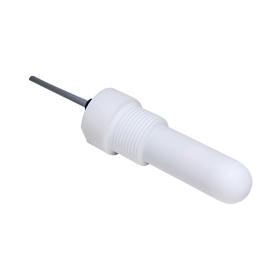
EGE-ELEKTRONIK SPEZIAL-SENSOREN GMBH
Germany
EGE capacitive level sensors for adhesive media offer the reliable monitoring of the filling level of granulate, powders, solids, such as feathers, fluids and aggressive as well as adhesive media. The medium to be detected functions as dielectric. The medium in touch with the sensor generates a capacity change. This is converted into a switching signal or an analogue 4...20 mA output signal. Level sensors of series KGFR are ideal for media with low DK value. The PTFE sleeve makes the sensor resistant to aggressive media and together with the round design ensures the fast slippage of the medium.
Request for a quote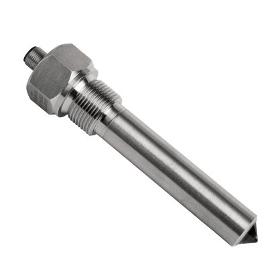
EGE-ELEKTRONIK SPEZIAL-SENSOREN GMBH
Germany
The optical level switches of this series are ideal for the detection of fluids with low DK value, such as lubrication oil or hydrocarbons. Optical level sensors detect the change of the refractive index at medium contact with the transparent tip from polyethersulphone (PES) or glass. The sensors with stainless steel housing and glass tip are also suited for the detection of aggressive media, such as solvents. Also available with Ex certification according to ATEX and IECEx.
Request for a quote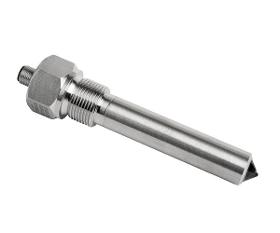
EGE-ELEKTRONIK SPEZIAL-SENSOREN GMBH
Germany
The optical level switches are ideal for the detection of fluids with low DK value, such as lubrication oil, hydrocarbons or solvents. Optical level sensors detect the change of the refractive index during medium contact at the sensor tip. The sensors with stainless steel housing and glass tip are also suited for the detection of aggressive media, such as solvents. the sensors are available with Ex certification according to ATEX and IECEx.
Request for a quote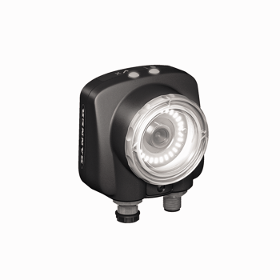
HANS TURCK GMBH & CO. KG
Germany
With the vision systems of the PresencePLUS-series we offer a selection of compact, high-performance image sensors for camera-based inspection and identification tasks. The compact vision sensor iVU closes the gap between the imaging equipment and the sensor level. The iVu sensor can be parametrized directly via an internal touch screen and is thus the solution for many applications, which otherwise would only be very complex to realize by using a large number of normal sensors.
Request for a quoteResults for
Level sensors - Import exportNumber of results
67 ProductsCountries
Company type
Category
- Sensors (51)
- Measurement and control instruments (24)
- Inductive sensors (7)
- Vehicles - mechanical components and parts (4)
- Measurement and regulation equipment and instruments - pressure (3)
- Measurement - Equipment & Instruments (1)
- Dosing - machines and equipment (1)
- Weighing and dosing equipment (1)
- Control boxes - electric (1)
- Dosing pumps (1)
- Explosion-proof - equipment (1)
- Fittings, metal (1)
- Industrial valves, operating equipment (1)
- Switching systems (1)
- Water distribution (1)